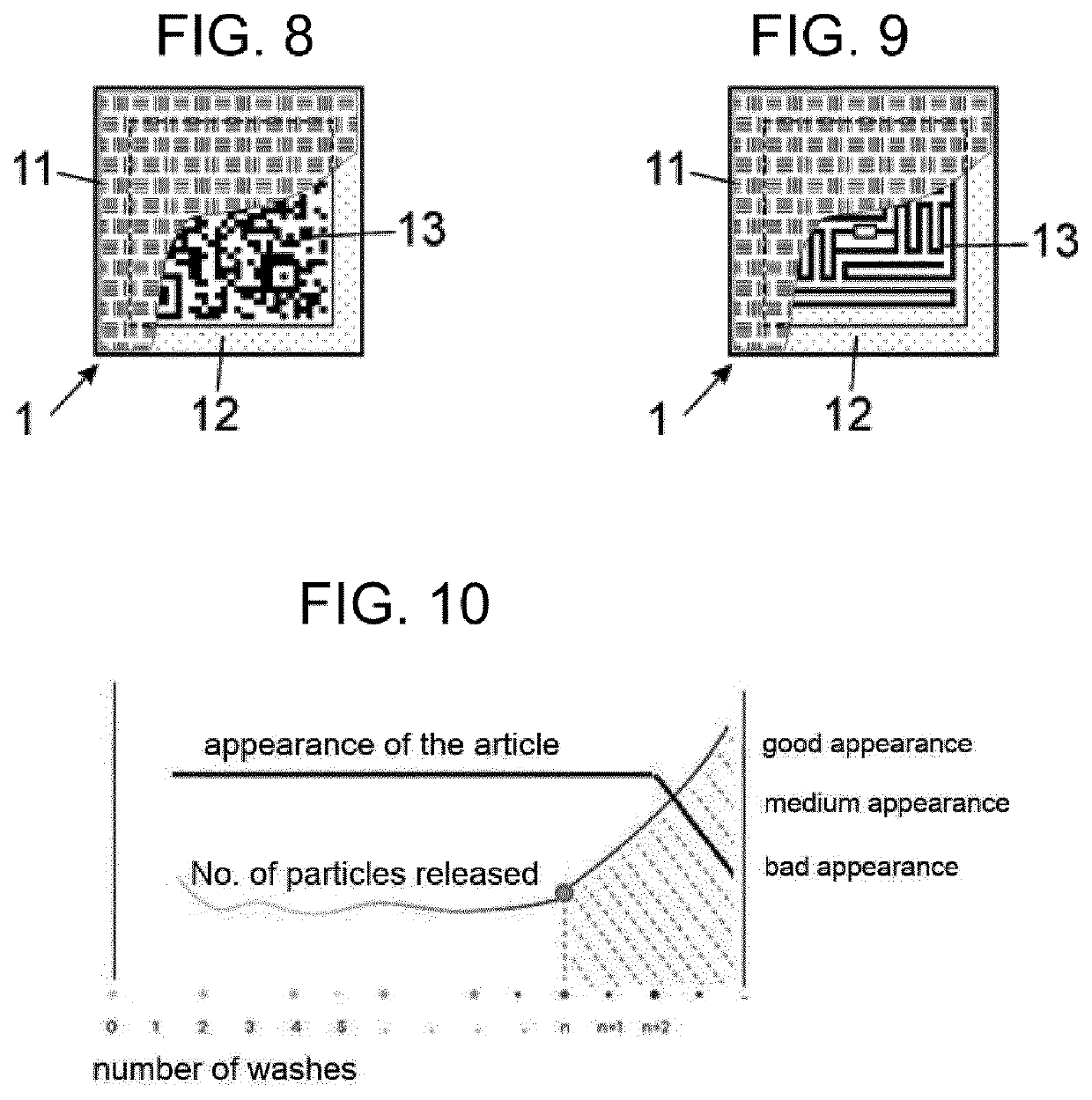Marker for objects that indicates the degree of release into the environment of elements that are difficult or slow to biodegrade (harmful elements)
- Summary
- Abstract
- Description
- Claims
- Application Information
AI Technical Summary
Benefits of technology
Problems solved by technology
Method used
Image
Examples
Embodiment Construction
[0040]In light of the aforementioned figures, and according to the numbering adopted, a non-limiting exemplary embodiment can be seen therein of the marker element of the degree of release of elements that are difficultly or slowly biodegradable (harmful elements) into the environment for objects susceptible to wearing out due to use and washing and consequently releasing elements that are difficultly biodegradable (harmful elements) into the environment, such as textile articles, footwear, accessories, bed linens or personal protective equipment (PPE), which comprises what is described in detail below.
[0041]The release of elements that are difficultly or slowly biodegradable (harmful elements) into the environment follows a linear rate until it reaches a point where the rate becomes exponential or accelerated as shown in FIG. 10. In the phase of exponential or accelerated release, the release of the elements is much faster than in the linear release phase, so it would be interestin...
PUM
| Property | Measurement | Unit |
|---|---|---|
| Thickness | aaaaa | aaaaa |
| Biodegradability | aaaaa | aaaaa |
| Surface roughness | aaaaa | aaaaa |
Abstract
Description
Claims
Application Information
 Login to View More
Login to View More - R&D
- Intellectual Property
- Life Sciences
- Materials
- Tech Scout
- Unparalleled Data Quality
- Higher Quality Content
- 60% Fewer Hallucinations
Browse by: Latest US Patents, China's latest patents, Technical Efficacy Thesaurus, Application Domain, Technology Topic, Popular Technical Reports.
© 2025 PatSnap. All rights reserved.Legal|Privacy policy|Modern Slavery Act Transparency Statement|Sitemap|About US| Contact US: help@patsnap.com


